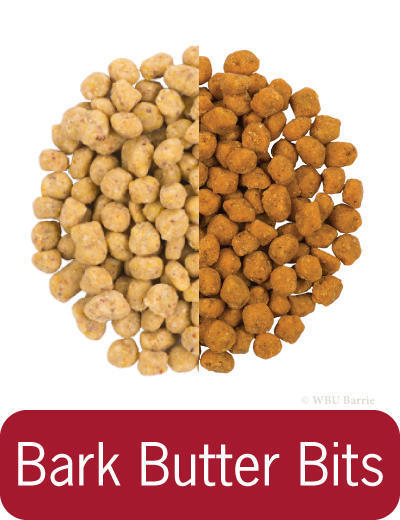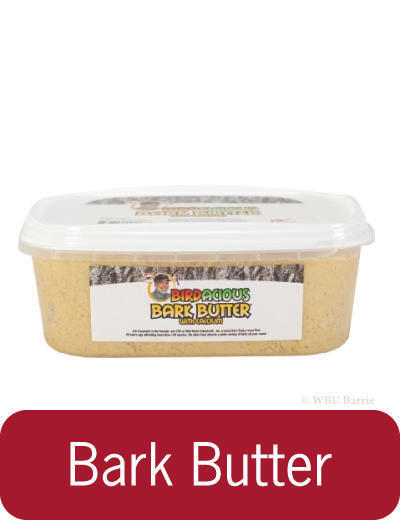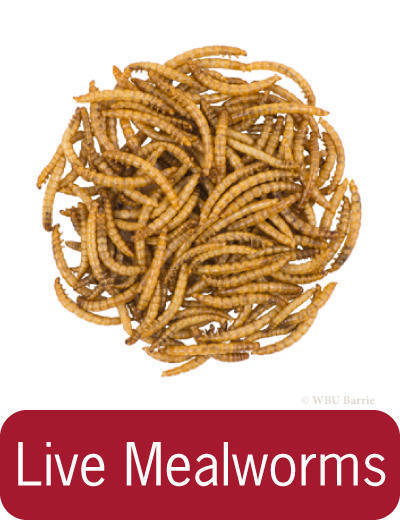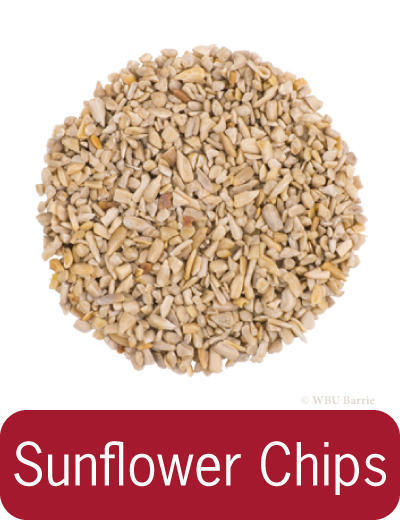Attracting Eastern Bluebirds to Your Backyard
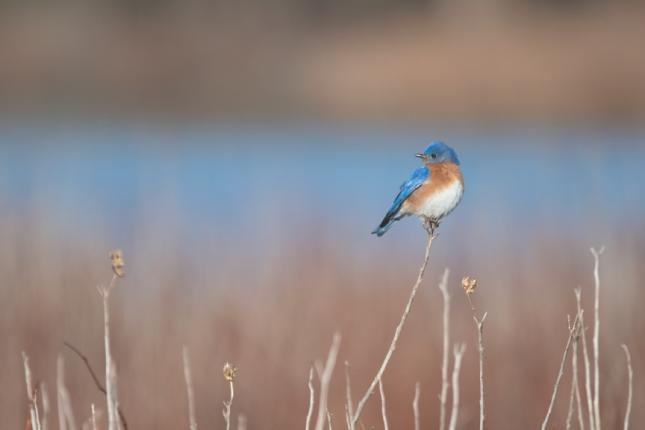 As Henry David Thoreau once said “The Bluebird carries the sky on its back”. It would be hard to find anything as dazzling as a Bluebird standing on a fence post in the early morning sun. Its brilliant blue plumage might even be said to rival the sky itself. Bluebirds are found throughout North America and Simcoe County is home to the Eastern Bluebirds. Bluebirds are most commonly observed out in the country as they perch on fences and telephone wires. We are always getting asked how to attract Eastern Bluebirds and our answer is always the same "tell me about the habitat around your house". If you are in the right habitat attracting bluebirds is not all that difficult. Eastern Bluebirds live in open areas including open fields, meadows, fence rows, abandoned orchards, large lawn, golf courses, parks, roadsides, farms and pastures. While most Eastern Bluebirds migrate into the south-central United States and Mexico a few will remain in Ontario during the winter if they have access to food, water and shelter.
As Henry David Thoreau once said “The Bluebird carries the sky on its back”. It would be hard to find anything as dazzling as a Bluebird standing on a fence post in the early morning sun. Its brilliant blue plumage might even be said to rival the sky itself. Bluebirds are found throughout North America and Simcoe County is home to the Eastern Bluebirds. Bluebirds are most commonly observed out in the country as they perch on fences and telephone wires. We are always getting asked how to attract Eastern Bluebirds and our answer is always the same "tell me about the habitat around your house". If you are in the right habitat attracting bluebirds is not all that difficult. Eastern Bluebirds live in open areas including open fields, meadows, fence rows, abandoned orchards, large lawn, golf courses, parks, roadsides, farms and pastures. While most Eastern Bluebirds migrate into the south-central United States and Mexico a few will remain in Ontario during the winter if they have access to food, water and shelter.
They will come to bird feeders for certain foods, bird baths for water and bird houses for nesting. Here are some of the foods, feeders, bird baths and houses you can offer Eastern Bluebirds to encourage them to visit and stay in your yard.
For more information on Eastern Bluebirds visit these two great resources:
Lab of Ornithology at Cornell- All About Birds: www.allaboutbirds.org/guide/Eastern_Bluebird
North American Bluebird Society: www.nabluebirdsociety.org
Foods
Bluebirds are often seen sitting on fence posts and fences or tall vegetation in a field waiting for insects. Eastern Bluebirds primarily eat insects and spiders as well as fruit, but they will also gladly accept a few foods from bird feeders. Bluebirds love live mealworms and can be drawn in close by offering a small dish with mealworms. Live mealworms are the best way to attract bluebirds. Here are some of the foods bluebirds enjoy at bird feeders:
Feeders
Eastern Bluebirds prefer feeders that are open so they can easily grab some food. However, if you have starlings, grackles and other birds that can scare off bluebirds a covered feeder with an entrance hole of 1½” is the way to go! The hole will allow bluebirds in and keep the other birds out. Placing a feeder near a nesting box will make it easy for parents to go between their nest and the food source. Here are some of our recommended feeders for Eastern Bluebird:
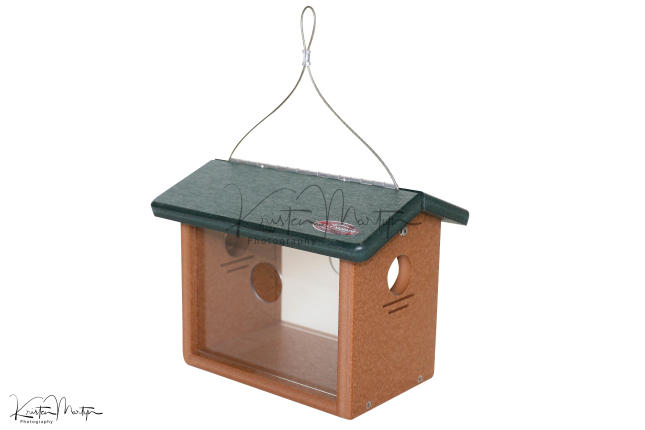 Recycled Hanging Mealworm Feeder: The Recycled Hanging Mealworm Feeder is a great way to offer mealworms to a variety of birds including bluebirds, woodpeckers, chickadees, nuthatches, cardinals and wrens. Place a single layer of mealworms, roasted mealworms, or Birdacious® Bark Butter Bits on the floor of the feeder. Birds will feed inside the feeder by entering from either end of the feeder. The hole size helps to keep out larger more aggressive birds such as starlings and jays from feeding. The Recycled Hanging Mealworm Feeder is made from recycled milk jugs and features a heavy acrylic window for easy viewing. Simply lift the hinged roof for easy filling. This feeder can be hung or mounted on a pole mounted.
Recycled Hanging Mealworm Feeder: The Recycled Hanging Mealworm Feeder is a great way to offer mealworms to a variety of birds including bluebirds, woodpeckers, chickadees, nuthatches, cardinals and wrens. Place a single layer of mealworms, roasted mealworms, or Birdacious® Bark Butter Bits on the floor of the feeder. Birds will feed inside the feeder by entering from either end of the feeder. The hole size helps to keep out larger more aggressive birds such as starlings and jays from feeding. The Recycled Hanging Mealworm Feeder is made from recycled milk jugs and features a heavy acrylic window for easy viewing. Simply lift the hinged roof for easy filling. This feeder can be hung or mounted on a pole mounted.
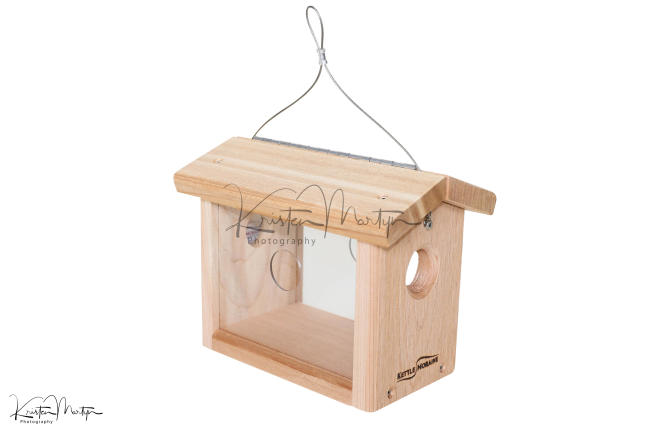 Hanging Mealworm Feeder: The Hanging Mealworm Feeder is a great way to offer mealworms to a variety of birds including bluebirds, woodpeckers, chickadees, nuthatches, cardinals and wrens. Place a single layer of mealworms, roasted mealworms, or Birdacious® Bark Butter Bits on the floor of the feeder. Birds will feed inside the feeder by entering from either end of the feeder. The hole size helps to keep out larger more aggressive birds.
Hanging Mealworm Feeder: The Hanging Mealworm Feeder is a great way to offer mealworms to a variety of birds including bluebirds, woodpeckers, chickadees, nuthatches, cardinals and wrens. Place a single layer of mealworms, roasted mealworms, or Birdacious® Bark Butter Bits on the floor of the feeder. Birds will feed inside the feeder by entering from either end of the feeder. The hole size helps to keep out larger more aggressive birds.
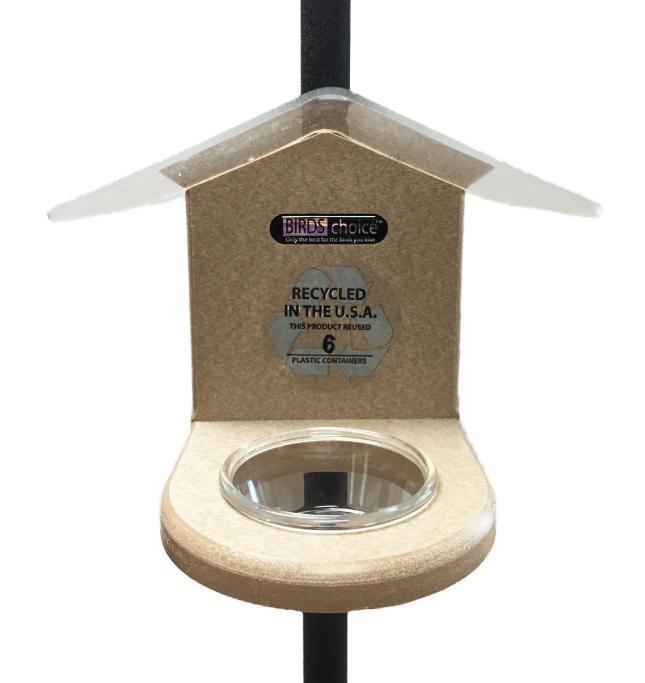 Recycled Pole-Mounted Mealworm Feeder: Made from recycled poly-lumber the Recycled Pole-Mounted Mealworm Feeder is a neat little feeder which attaches with clamps to a pole. It features a clear poly roof to keep the rain out of the clear cup which holds a good quantity of mealworms. You can also use the cup for jelly, peanuts, Jim's Birdacious® Bark Butter® Bits or any other treat that you want to feed to your favorite birds in your yard! The Recycled Pole-Mounted Mealworm Feeder is available in two colours tan brown and orange.
Recycled Pole-Mounted Mealworm Feeder: Made from recycled poly-lumber the Recycled Pole-Mounted Mealworm Feeder is a neat little feeder which attaches with clamps to a pole. It features a clear poly roof to keep the rain out of the clear cup which holds a good quantity of mealworms. You can also use the cup for jelly, peanuts, Jim's Birdacious® Bark Butter® Bits or any other treat that you want to feed to your favorite birds in your yard! The Recycled Pole-Mounted Mealworm Feeder is available in two colours tan brown and orange.
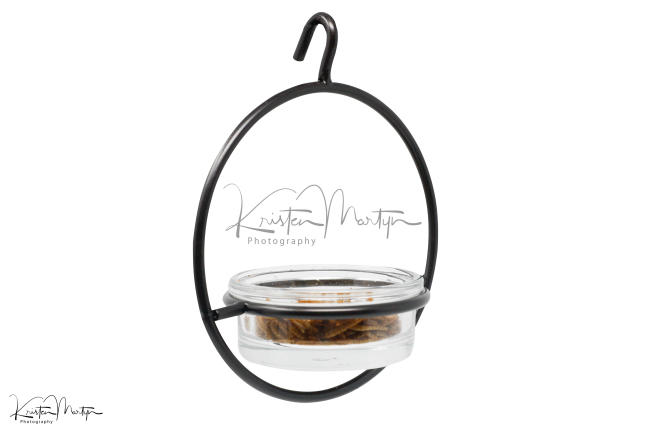
7" Metal Sphere and Glass Mealworm Feeder: Made of Recycled Glass and metal, the 7" Metal Sphere and Glass Mealworm Feeder without drainage is perfect as a mealworm feeder, jelly or Birdacious® Bark Butter Bits container. It will attract many song birds such as bluebirds, orioles, chickadee, woodpeckers, wrens and many more depending on the season. Use a single feeder or link them to each other to feed a larger crowd!
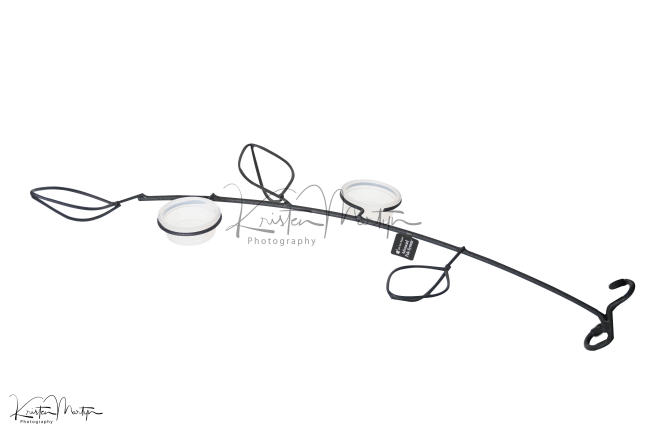 WBU APS Fruit Feeder Branch Perches Arm EZ-Attach: Placing an EZ-Attach Advanced Pole System® (APS) Fruit Feeder Branch Perch on your bird feeding station is the perfect way to give your birds a snack and little R and R. This perch comes complete with two cups for feeding BirdBerry Jelly, mealworms, Bark Butter Bits, peanuts or even water. The branches three decorative leaves double as fruit holder for orange or apple halves. Baltimore Orioles, Gray Catbirds, woodpeckers, cardinals, chickadees, jays and more will take treats from the Feeder Branch Perch. Some birds will take turns eating at a bird feeder. Typically, they will wait out of view in a nearby tree or bush. Our Fruit Feeder Branch Perch allows birds to remain in sight while they wait to eat or feed from the branches feeding cups. It can also be used to hang additional lightweight feeders.
WBU APS Fruit Feeder Branch Perches Arm EZ-Attach: Placing an EZ-Attach Advanced Pole System® (APS) Fruit Feeder Branch Perch on your bird feeding station is the perfect way to give your birds a snack and little R and R. This perch comes complete with two cups for feeding BirdBerry Jelly, mealworms, Bark Butter Bits, peanuts or even water. The branches three decorative leaves double as fruit holder for orange or apple halves. Baltimore Orioles, Gray Catbirds, woodpeckers, cardinals, chickadees, jays and more will take treats from the Feeder Branch Perch. Some birds will take turns eating at a bird feeder. Typically, they will wait out of view in a nearby tree or bush. Our Fruit Feeder Branch Perch allows birds to remain in sight while they wait to eat or feed from the branches feeding cups. It can also be used to hang additional lightweight feeders.
Dimensions: 27½" L x 10” W
Birdbaths (Water)
Water is essential to all birds and providing a bird bath means they don’t have to travel great distances to find water. Water in a bird bath should be cleaned regularly as birds defecate, leave bits of food and feathers in the bath, not to mention leaves and other items that can end up in a bath. In the winter, heated birdbaths provide an excellent place for birds to drink. In fact, most encounters with Eastern Bluebirds during the winter months take place by small streams and flowing water that is open all winter long. During the warmer months the WBU Water Wigglers and Solar Fountains create moving water in your birdbath, making the bath even more attractive to birds. WBU Barrie carries a variety of plastic, metal and clay birdbaths and accessories, as well as heated birdbaths for the colder months. Visit our page on birdbaths for a selection of styles as well as accessories like brushes, solar fountains, water wigglers and Fountain Fresh Water Clarifier.
Bluebird Houses (Nest Boxes)
Eastern Bluebirds are cavity nesters and will use artificial nest boxes. Habitat and nest cavities had been disappearing for many years but bluebirds have made an incredible comeback due to thousands of bluebird nest boxes being installed across the country. Eastern Bluebirds reliably use nesting boxes to raise their families. Bluebirds like to nest in areas including open fields, meadows, fence rows, abandoned orchards, large lawn, golf courses, parks, roadsides, farms and pastures. If you live in an area with ideal habitat for bluebirds try putting out a Bluebird Nest Box to encourage these beautiful birds to stay in your yard. Bluebird house can be mounted on the WBU Advanced Pole System® (APS) Basic Setup Mounting Hardware or a fence. Poles systems tend to offer the best protection from predators. Bluebird boxes should be mounted 5 to 6 feet above the ground and facing away from prevailing winds, and 50 to 100 meters apart. Try to place the boxes close to trees shrubs or fences. Bluebirds will use them when feeding and when young ones are learning to fly.
Not all bird houses on the market are made for Eastern Bluebirds. Make sure any nest box you place out for them meets the following specifications. Nest boxes should have an opening of 1½”, the entrance should be located 6-7” above the floor of the box, the size of the floor should be 4” x 4”. Bird houses with predator guards will help deter squirrels from chewing and making the entrance hole larger.
Eastern Bluebird breed from late April through July and nest boxes should be placed out for use in March so birds may inspect the box when they return from their migration. Eastern Bluebirds use grasses, pine needles, grass and other vegetation to make their nest. While it is very exciting to have birds nest in your nest box resist the temptation disturb them too much. They lay 4-5 clear blue eggs and the eggs hatch after an incubation period of 12-15 days. The young birds fledge when they are 15-18 days old. Eastern Bluebirds will have 2-3 broods in a season, so it is important that you do not clean out your nesting box until the early fall (late September).
After the nesting season (late September to be safe), inspect your nest boxes and perform needed maintenance. After the nesting season has ended clean out old nests and rub the interior surfaces with unscented ivory soap as a wasp deterrent. Make sure nest boxes are in good condition and mounted securely. Consider moving the nest box to a different location if it has been unproductive.
If House Sparrows take over the bird box try mounting a second box 5-15 feet away from the first. Sparrows will only nest in one leaving the other for bluebirds. If Tree Swallows competes for the nest site, place another box near the first (15 to 25 feet from the original house). Tree Swallows will help keep other swallows away from both boxes. They seem to tolerate overlapping territories of other species, but not their own.
WBU Barrie offers a great selection of Eastern Bluebird houses (many of which are approved by the North American Bluebird Society) and nesting accessories.
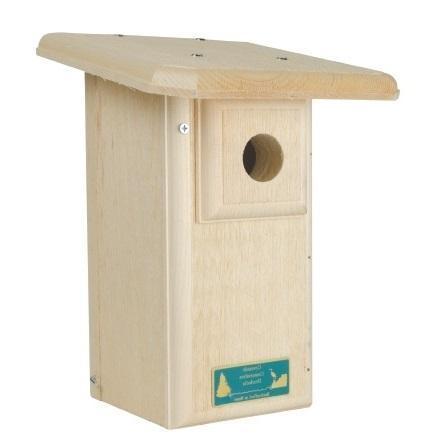 WBU Eastern Bluebird House: The WBU Eastern Bluebird House is one of the finest bluebird houses on the market! Predator guard is standard to keep starlings, squirrels and other undesirables out, while small floor discourages sparrow nests. Made of Eastern White Pine this bird house is constructed to last and features ventilation and drainage holes, doors that open for easy access for cleaning, hooks for hanging and a rough interior so fledglings can easily leave the nest box. Each bird house also includes a brochure that describes the species that the nest box has been designed for, placement and maintenance of the product. This bird house has been approved by the North American Bluebird Society. This house can be mounted on the WBU Advanced Pole System® (APS) Basic Setup Mounting Hardware or a fence. Poles systems tend to offer the best protection from predators. Bluebird boxes should be mounted 4 to 5 feet above the ground and facing away from prevailing winds, and 50 to 100 meters apart. Try to place the boxes close to trees shrubs or fences. Bluebirds will use them when feeding and when young ones are learning to fly.
WBU Eastern Bluebird House: The WBU Eastern Bluebird House is one of the finest bluebird houses on the market! Predator guard is standard to keep starlings, squirrels and other undesirables out, while small floor discourages sparrow nests. Made of Eastern White Pine this bird house is constructed to last and features ventilation and drainage holes, doors that open for easy access for cleaning, hooks for hanging and a rough interior so fledglings can easily leave the nest box. Each bird house also includes a brochure that describes the species that the nest box has been designed for, placement and maintenance of the product. This bird house has been approved by the North American Bluebird Society. This house can be mounted on the WBU Advanced Pole System® (APS) Basic Setup Mounting Hardware or a fence. Poles systems tend to offer the best protection from predators. Bluebird boxes should be mounted 4 to 5 feet above the ground and facing away from prevailing winds, and 50 to 100 meters apart. Try to place the boxes close to trees shrubs or fences. Bluebirds will use them when feeding and when young ones are learning to fly.
Dimensions: 12½" x 6" x 8½"
House Opening: 1½" diameter entrance hole
Roosting Boxes (Shelter)
Eastern Bluebirds and other cavity dwelling birds seek shelter during cold nights of the winter months. Shelter is essential for their survival in harsh conditions. Roosting boxes provide shelter for birds on very cold nights. Roosting boxes differ from a typical bird house because they feature a hole on the bottom of the box to trap heat and three dowels on the inside of the house to accommodate multiple perching birds. At WBU Barrie we offer Convertible Winter Roosting boxes which can be flipped to convert it to an Eastern Bluebird house after the winter season.
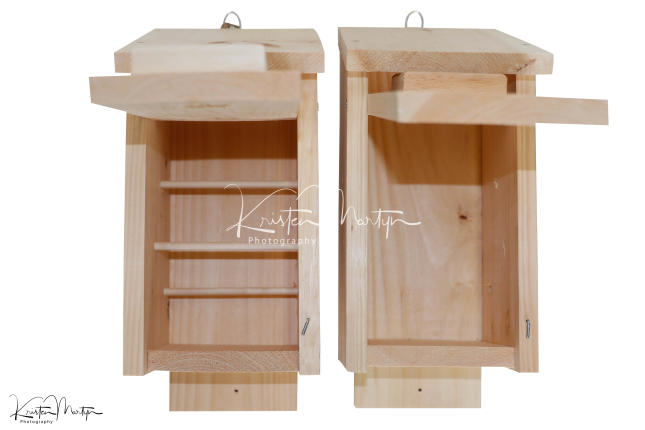
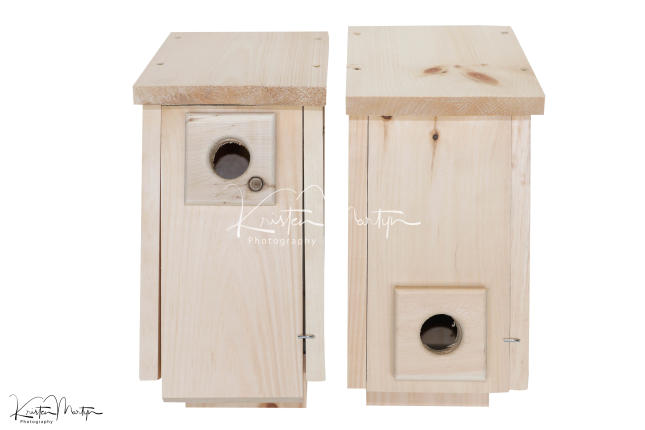 The Convertible Winter Roosting House is a great way to provide protection from the cold for many of your smaller backyard birds including chickadees, nuthatches, titmice and wrens during the colder months and a place to nest in the warmer months. As the temperature drops in the winter, these birds will often gather together to share body heat, greatly improving their chances of surviving harsh weather. The entrance hole with predator guard is at the bottom, and all seams are joined tightly and sealed to prevent heat loss. You may choose to stain the roof a dark to attract the suns heat; but this is not necessary.
The Convertible Winter Roosting House is a great way to provide protection from the cold for many of your smaller backyard birds including chickadees, nuthatches, titmice and wrens during the colder months and a place to nest in the warmer months. As the temperature drops in the winter, these birds will often gather together to share body heat, greatly improving their chances of surviving harsh weather. The entrance hole with predator guard is at the bottom, and all seams are joined tightly and sealed to prevent heat loss. You may choose to stain the roof a dark to attract the suns heat; but this is not necessary.
The Convertible Winter Roosting Box can change to become a nesting box after the winter season. Simply flip and position the front panel with a ventilation slot at the top and remove the three interior perches and the roost becomes a nest box. Handmade in Ontario, Canada from Eastern White Pine the Convertible Roosting Box is constructed to last and features drainage holes, doors that open for easy access for cleaning, dowels for perching, hooks for hanging and a rough interior so fledglings can easily leave the nest box. The inside features 3 staggered perches to accommodate roosting birds. The front wall opens to allow for easy cleaning and maintenance. Add a layer of wood chips to the bottom for insulation and comfort.
This Roosting Box can be mounted on the WBU Advanced Pole System® (APS) Basic Setup Mounting Hardware or a fence. Poles systems tend to offer the best protection from predators. Bluebird boxes should be mounted 6-15 feet above the ground and facing away from prevailing winds.
Measurements: 17" H x 7 ¼" W x 9" D
House Opening: 1½" diameter entrance hole.
Fun Facts
-
Bluebirds may raise two and sometimes three broods per season. Pairs may build their second nests on top of the first nest or they may nest in an entirely new site. The male continues to take care of the recently fledged young while the female begins to re-nest. Young of the first brood will occasionally help raise their siblings in the second brood.
-
Bluebirds have no blue pigments in their feathers. Instead, each feather barb has a thin layer of cells that absorb all wavelengths of color except blue. Only the blue wavelength is reflected and scattered, resulting in their blue appearance to our eyes.
-
Bluebirds can fly at speeds up to 72 kmh (45 mph) if necessary.


